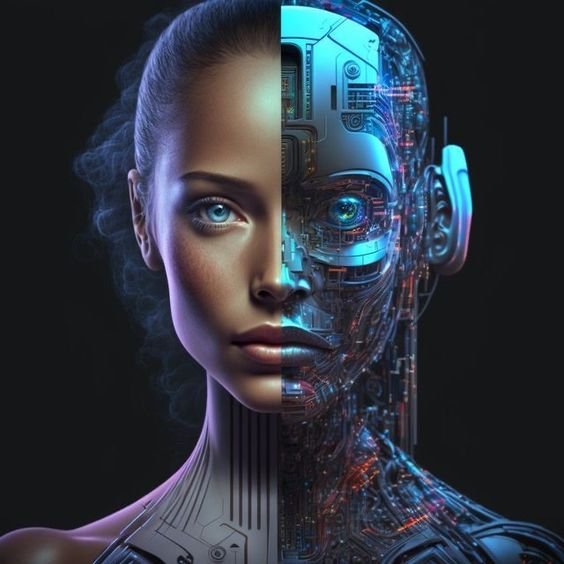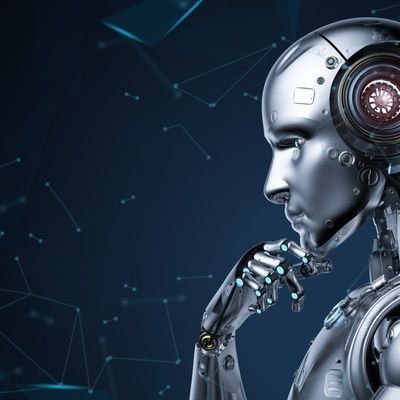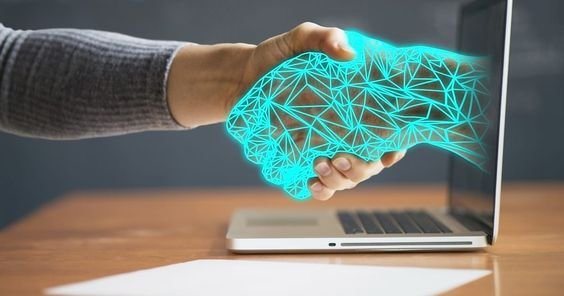
Human-Robot Interaction (HRI) is a multidisciplinary field that focuses on understanding, designing, and evaluating robotic systems that interact with humans. As robots become increasingly prevalent in various aspects of life, from industrial applications to personal assistance, the significance of effective and seamless interaction between humans and robots is paramount.
This article delves into the challenges of human-robot interaction and explores potential solutions to these challenges, highlighting the advancements and future prospects of HRI.
Understanding Human-Robot Interaction
HRI involves the study of how humans and robots can communicate and work together in a shared environment. It encompasses various dimensions such as social, cognitive, physical, and emotional interactions. The goal is to create robots that can understand and respond to human behaviors, intentions, and emotions in a natural and intuitive manner.
Challenges in Human-Robot Interaction
Technical Challenges
Perception and Sensing
Robots need to perceive their environment accurately to interact effectively with humans. This involves using sensors, cameras, and other technologies to gather data about the surroundings. However, accurately interpreting this data in real-time poses significant challenges.
Solution: Advances in computer vision and machine learning can improve robots’ ability to perceive and understand their environment. Techniques such as deep learning for image recognition and sensor fusion can enhance the accuracy and robustness of robotic perception.
Natural Language Processing (NLP)
Effective communication between humans and robots requires understanding and generating natural language. NLP allows robots to interpret human speech and respond appropriately. However, language ambiguity, slang, and accents can complicate this process.
Solution: Developing advanced NLP algorithms and leveraging large language models, such as GPT-4, can improve robots’ ability to understand and generate natural language. Continuous learning and adaptation to specific users’ speech patterns can also enhance NLP performance.
Human Detection and Tracking
Identifying and tracking humans in dynamic environments is crucial for safe and effective interaction. This includes recognizing gestures, facial expressions, and body language.
Solution: Integrating multiple sensors and employing sophisticated algorithms for human detection and tracking can enhance robots’ ability to recognize and respond to human actions. Combining visual data with other sensory inputs, such as auditory and haptic feedback, can provide a more comprehensive understanding of human behavior.
Social and Cognitive Challenges
Trust and Acceptance
For robots to be widely accepted and trusted by humans, they must demonstrate reliability, safety, and competence. Building trust is particularly challenging in applications where robots assist with critical tasks, such as healthcare or autonomous driving.
Solution: Ensuring transparency in robotic decision-making and providing clear explanations for their actions can build trust. Conducting extensive user studies and trials to validate robot performance and safety can also enhance acceptance.
Emotional Intelligence
Robots interacting with humans need to understand and respond to human emotions appropriately. This involves recognizing emotional cues from facial expressions, tone of voice, and body language.
Solution: Incorporating affective computing technologies, which enable robots to detect and respond to human emotions, can improve emotional intelligence. Training robots using datasets that include diverse emotional expressions can enhance their ability to recognize and interpret emotions accurately.
User Experience and Interface Design
Designing intuitive and user-friendly interfaces for interacting with robots is crucial. Poorly designed interfaces can lead to frustration and reduce the effectiveness of HRI.
Solution: Employing user-centered design principles and involving end-users in the design process can result in more intuitive and effective interfaces. Conducting usability testing and iterating on design based on user feedback can improve the overall user experience.
Ethical and Legal Challenges
Privacy and Security
The use of robots, especially those equipped with cameras and sensors, raises concerns about privacy and data security. Ensuring that robots do not infringe on users’ privacy or collect data without consent is critical.
Solution: Implementing robust data protection measures and ensuring compliance with privacy regulations can address these concerns. Providing users with control over their data and transparency about data usage can also enhance trust.
Autonomy and Responsibility
As robots become more autonomous, determining accountability for their actions becomes complex. This is particularly challenging in scenarios where robots make decisions that have significant consequences, such as in healthcare or law enforcement.
Solution: Establishing clear guidelines and regulations for the deployment and use of autonomous robots can address accountability issues. Ensuring that robots are designed with fail-safes and human oversight can also mitigate risks associated with autonomy.
Solutions and Advancements in HRI
Collaborative Robots (Cobots)
Collaborative robots, or cobots, are designed to work alongside humans, assisting with tasks that require precision, strength, or repetition. Cobots are equipped with sensors and safety features that allow them to operate safely in close proximity to humans.
Advancements: Modern cobots are becoming more adaptable and versatile, capable of learning new tasks through demonstration and reinforcement learning. They are used in various industries, including manufacturing, healthcare, and logistics.
Social Robots
Social robots are designed to engage with humans in a social context, providing companionship, assistance, or entertainment. These robots are equipped with advanced NLP, emotion recognition, and social interaction capabilities.
Advancements: Social robots are being used in healthcare to assist elderly patients, in education to engage children, and in customer service to enhance user experience. Examples include robots like Pepper, which can interact with humans using speech and gestures.
Telepresence Robots
Telepresence robots enable remote interaction by allowing a user to be virtually present in a different location. These robots are equipped with cameras, microphones, and screens to facilitate real-time communication.
Advancements: Telepresence robots are used in healthcare for remote consultations, in business for virtual meetings, and in education for remote learning. Improved connectivity and mobility features are enhancing the effectiveness of telepresence robots.
Reinforcement Learning and Adaptation
Reinforcement learning (RL) allows robots to learn from their interactions with the environment and improve their performance over time. RL algorithms enable robots to adapt to new tasks and environments without explicit programming.
Advancements: RL is being used to train robots for complex tasks such as robotic surgery, autonomous driving, and industrial automation. The ability of RL algorithms to learn from trial and error is enhancing the versatility and adaptability of robots.
Multi-Modal Interaction
Multi-modal interaction involves using multiple sensory inputs, such as vision, speech, and touch, to interact with robots. This approach provides a more natural and intuitive way for humans to communicate with robots.
Advancements: Integrating multi-modal interaction capabilities is improving the effectiveness of HRI. Robots can now respond to a combination of voice commands, gestures, and visual cues, providing a more seamless interaction experience.
Future Prospects of Human-Robot Interaction
Advancements in AI and Machine Learning
The future of HRI will be significantly influenced by advancements in AI and machine learning. As these technologies continue to evolve, robots will become more capable of understanding and responding to complex human behaviors and emotions.
Prospects: Future robots will possess advanced cognitive abilities, allowing them to learn from interactions and improve their performance autonomously. This will enable robots to handle more complex and dynamic tasks, enhancing their utility in various domains.
Integration with Augmented Reality (AR) and Virtual Reality (VR)
The integration of AR and VR with HRI will open new possibilities for immersive and interactive experiences. AR and VR can provide intuitive interfaces for controlling and interacting with robots, enhancing user engagement and effectiveness.
Prospects: AR and VR can be used in training robots, providing virtual environments for safe and efficient learning. They can also enhance telepresence, allowing users to have more immersive and interactive remote interactions with robots.
Personalized Interaction
Personalizing HRI based on individual user preferences and behaviors will enhance the effectiveness and acceptance of robots. Personalization can involve adapting the robot’s behavior, communication style, and functionality to suit individual users.
Prospects: Future robots will be able to learn and adapt to individual user preferences, providing a more personalized and engaging interaction experience. This will be particularly beneficial in applications such as healthcare, education, and personal assistance.
Ethical and Inclusive Design
The future of HRI will involve addressing ethical considerations and ensuring inclusive design. Robots must be designed to respect privacy, ensure safety, and provide equitable access to all users.
Prospects: Developing ethical guidelines and frameworks for HRI will be crucial in ensuring responsible and inclusive use of robots. This will involve collaboration between researchers, policymakers, and industry stakeholders to establish standards and best practices.
Human-Robot Interaction is a rapidly evolving field with significant potential to transform various aspects of life. While there are numerous challenges related to perception, communication, trust, and ethics, advancements in technology and research are providing innovative solutions.
As we look to the future, the integration of AI, machine learning, AR, VR, and personalized interaction will enhance the capabilities and effectiveness of robots. Addressing ethical considerations and ensuring inclusive design will be crucial in realizing the full potential of HRI.
Ultimately, effective and seamless interaction between humans and robots will enhance productivity, improve quality of life, and drive innovation across industries. The future of HRI is promising, with endless possibilities for creating robots that can understand, assist, and collaborate with humans in meaningful ways.









